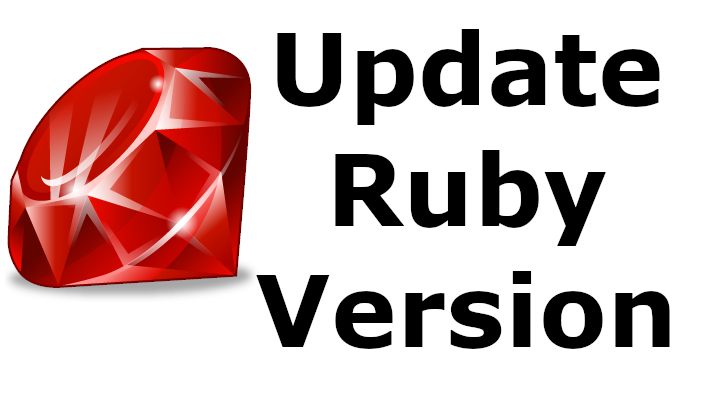Update Ruby Version

Update Ruby to latest or specified version
- Check that Ruby is installed
- Install the Ruby Version Manager
- Install the Desired Ruby Version
- Set the Version of Ruby in RVM
Check that Ruby is installed
Open a terminal and type the following command. This should give you the latest version if Ruby is installed or a command not found error if it is not.
ruby -v
Install the Ruby Version Manager
Install the Ruby version manager (rvm) to manage the version of Ruby that is used. Install or update to the latest stable version by executing the following command.
curl -L https://get.rvm.io | bash -s stable
If you are installing rvm for the first time, a terminal restart may be required. Or run the following command to refresh
source ~/.rvm/scripts/rvm
Install the Desired Ruby Version
Check the Ruby Website for the latest stable version of Ruby. Or use the following command to install the latest version.
rvm install ruby --latest
If you want to install a different version of Ruby than the latest, you can use the following command to see the available versions.
Ruby versions under the *MRI Rubies section of the results*
rvm list known
Then use the desired version to run the following command
rvm install ruby-[version]
This may take some time to install depending on the number of dependencies and may ask for permission a few times.
Set the Version of Ruby in RVM
Now that the desired version of Ruby is installed it should be the version being run. Verify by running the following command.
ruby -v
If the version returned is not the desired version, rvm needs to be set to know which version should be used. Use the following command to set the desired version as the default version.
rvm --default use ruby-[version]
You can use multiple versions of Ruby on different project by telling rvm which version of Ruby to use at any time by running the following command.
rvm use ruby-[version]